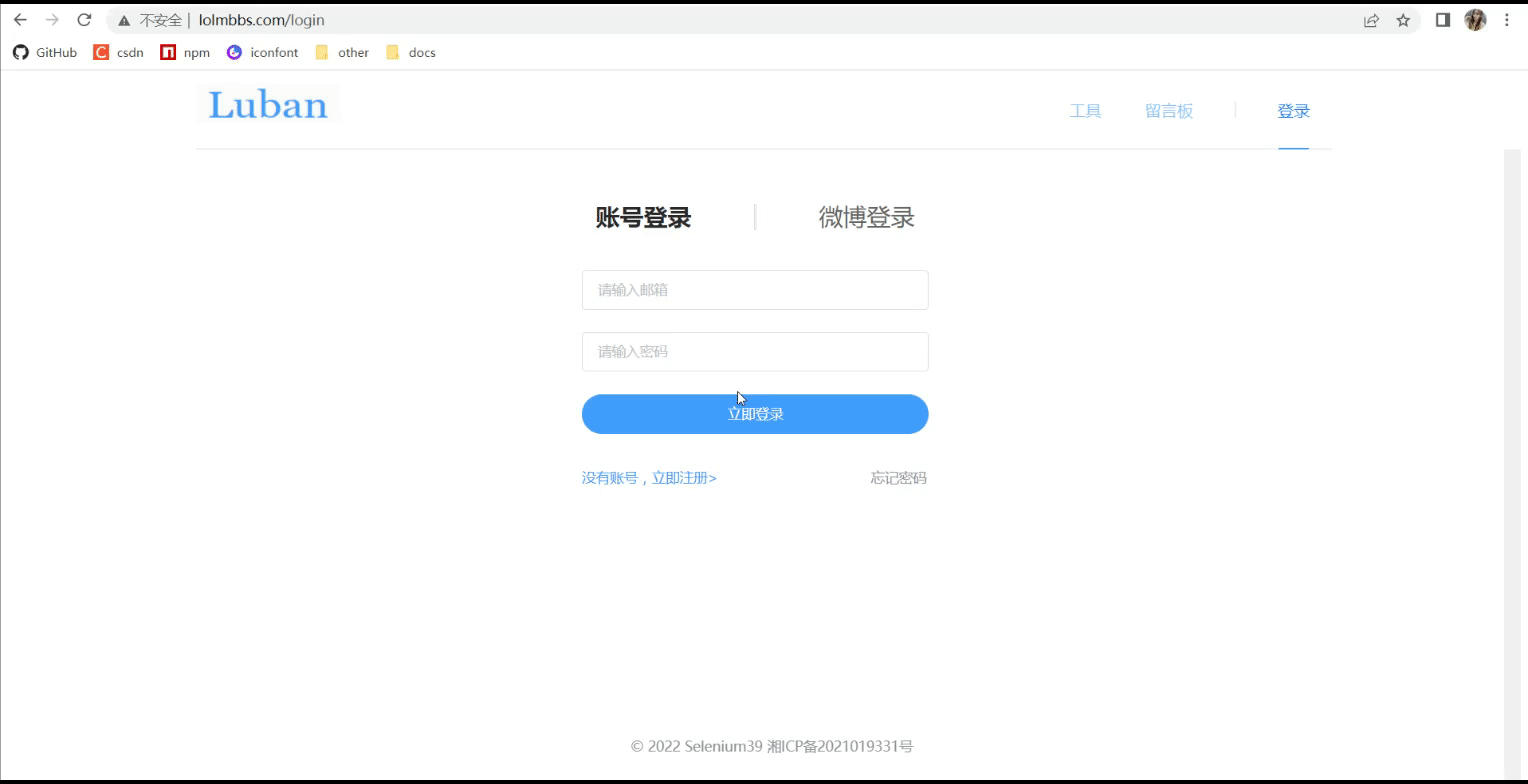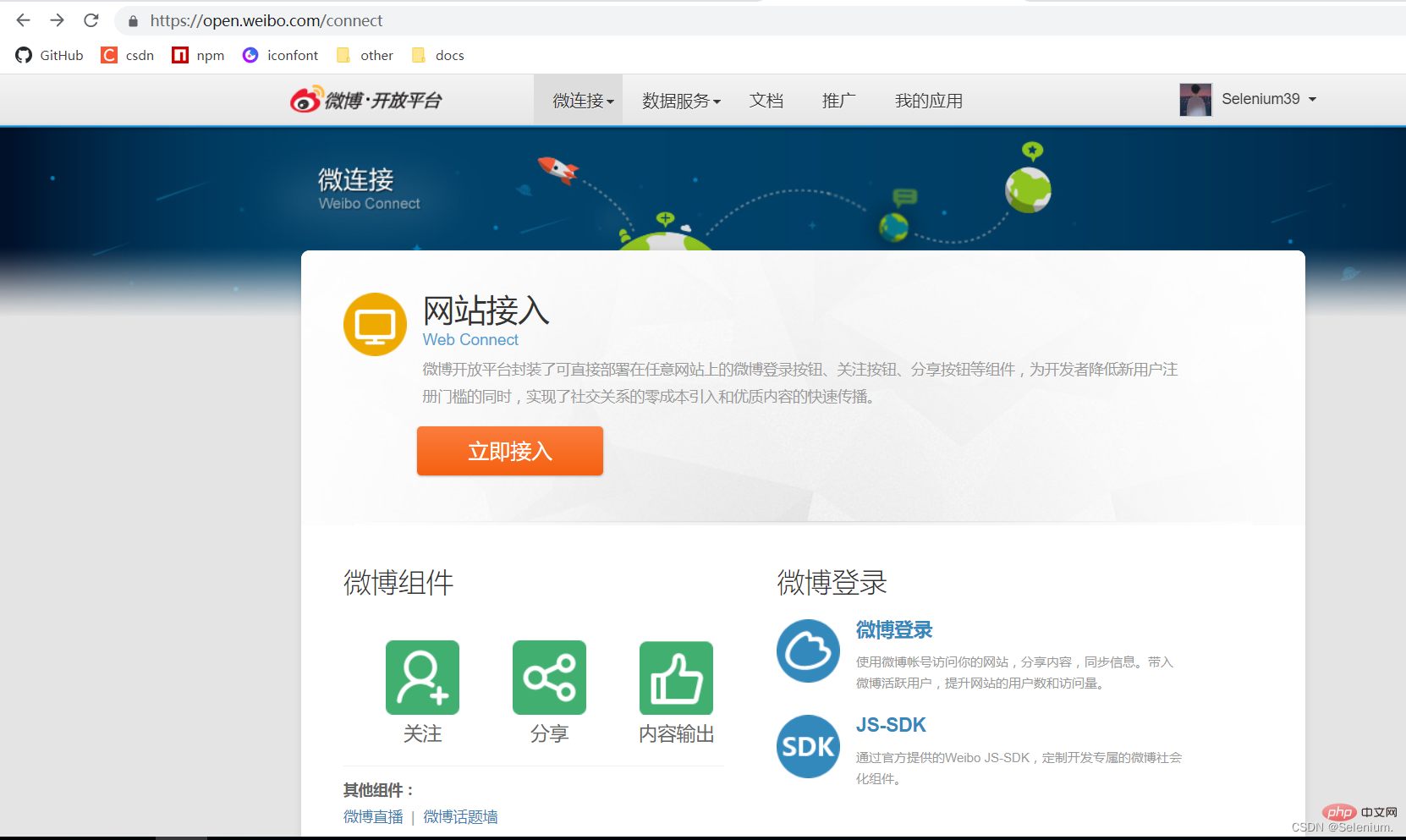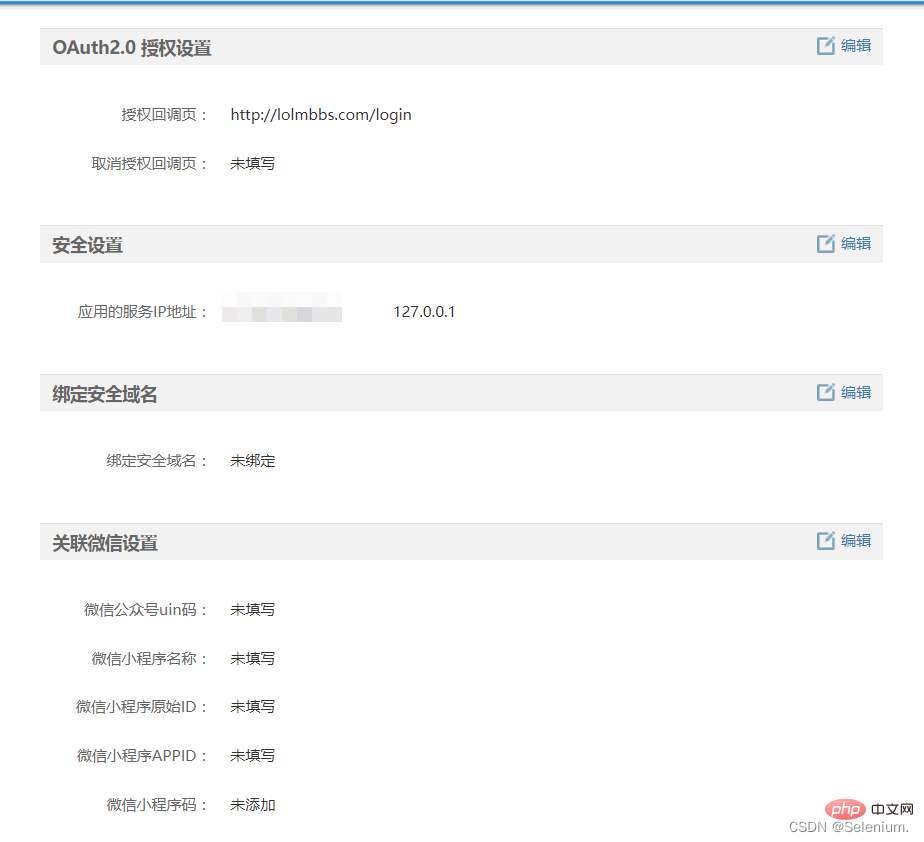Home > Article > Web Front-end > A brief analysis of how node performs third-party login on Weibo
How to perform third-party login on Weibo? The following article will introduce to you how to use node to implement third-party login on Weibo. I hope it will be helpful to you!

You can access Weibo third-party login without registration, which provides a better user experience. Today we will use nodejs to implement Weibo third-party login (other languages are also available) ). [Related tutorial recommendations: nodejs video tutorial]
Online example: http://www. lolmbbs.com/login
1. Click the Weibo login button to log in

2. Scan the QR code to log in
Specific implementation
Log in to https://open.weibo.com/connect to apply for web website When accessing
for local development, write the application address: 127.0.0.1



const weiboUrl = `https://api.weibo.com/oauth2/authorize?client_id=${weiboConfig.appKey}&response_type=code&redirect_uri=${weiboConfig.redirectUrl}` redirectUrl: Your front-end page that will be redirected after successful user authorization. I What is written here is http://127.0.0.1:8080/login
created() {
const { code } = this.$route.query;
if (code) {
loginCallback({ code }).then((res) => {
this.$message({
message: `${res.nickname} 欢迎您`,
type: "success",
});
this.setUser(res);
this.$router.push("/tool/qr");
});
}
}3. Backend login callback interface, obtain accessToken through user code, and then obtain user information through accessToken to complete login async loginCallback(ctx) {
let { code } = ctx.request.body
if (!code) {
return ctx.error(errCode.PARAMS_ERROR, '参数错误')
}
// 获取accessToken
const { access_token, uid } = await got.post('https://api.weibo.com/oauth2/access_token', {
form: {
client_id: weiboConfig.appKey,
client_secret: weiboConfig.appSecret,
grant_type: 'authorization_code',
redirect_uri: weiboConfig.redirectUrl,
code
}
}).json()
// 通过accessToken获取UserInfo
const { id, name: nickname, avatar_hd: avatar } = await got.get(`https://api.weibo.com/2/users/show.json?access_token=${access_token}&uid=${uid}`).json()
// 在自己的系统内创建User
let [user, isCreate] = await WeiboUser.upsert({ id, nickname, avatar })
// 生成登录Token,通过userType区分是微博登录用户还是系统账号登录用户
const token = await jwt.createToken({ ...user.toJSON(), userType: 'weiboUser' })
return ctx.success({ nickname, avatar, token })
} async getWeiboLoginQr(ctx) {
const qrApi = `https://api.weibo.com/oauth2/qrcode_authorize/generate?client_id=${weiboConfig.appKey}&redirect_uri=${weiboConfig.redirectUrl}&scope=&response_type=code&state=&__rnd=${Date.now()}`
const { url, vcode } = await got.get(qrApi).json()
return ctx.success({ weiboQrUrl: url, vcode })
} const id = setInterval(() => {
getWeiboLoginQrStatus({ vcode }).then((res) => {
const { status, url } = res;
if (status === "3") {
window.location = url;
clearInterval(id);
}
});
}, 3000); End:
async getWeiboLoginQrStatus(ctx) {
const { vcode } = ctx.request.query
if (!vcode) {
return ctx.error(errCode.PARAMS_ERROR, '参数错误')
}
const queryQrApi = `https://api.weibo.com/oauth2/qrcode_authorize/query?vcode=${vcode}&__rnd=${Date.now()}`
const { status, url } = await got(queryQrApi).json()
return ctx.success({ status, url })
}If the status is 3, the code user has scanned the code to authorize, and the URL returned at the same time is the front-end callback URL after clicking the button to log in. The subsequent steps are exactly the same as 2. Jump to the authorization page and obtain the user code. For more node-related knowledge, please visit: nodejs tutorial!
The above is the detailed content of A brief analysis of how node performs third-party login on Weibo. For more information, please follow other related articles on the PHP Chinese website!